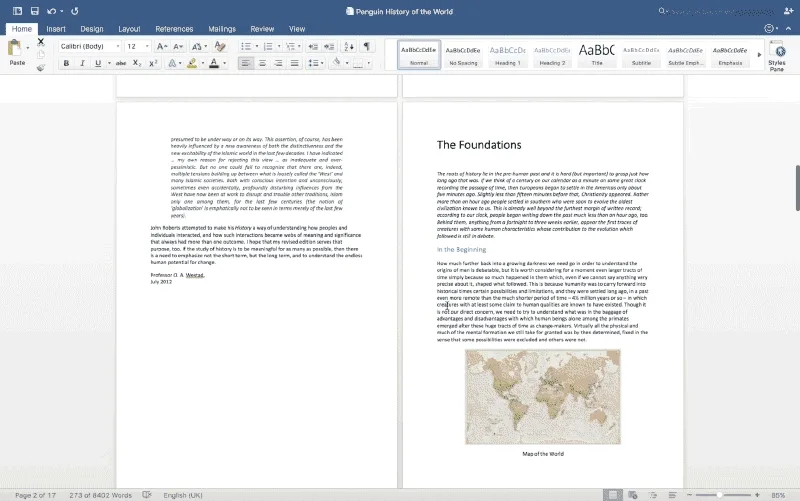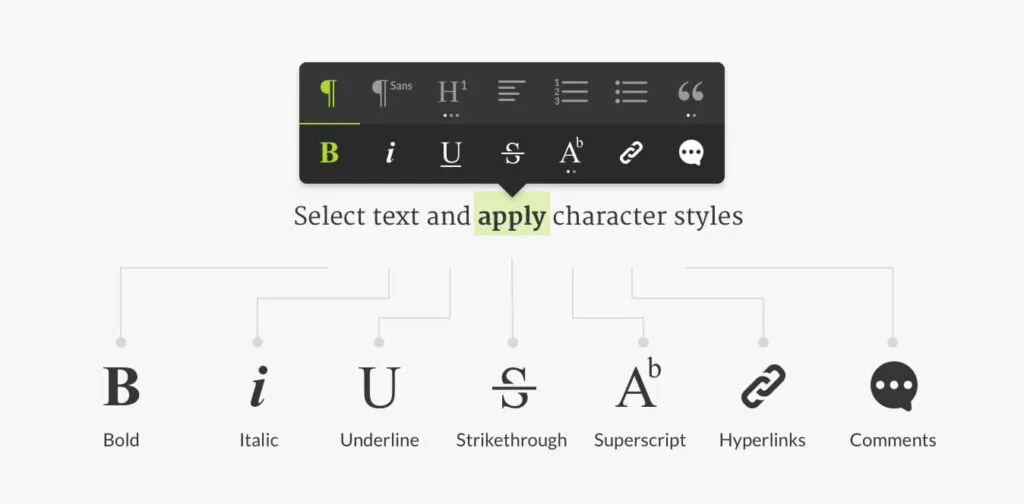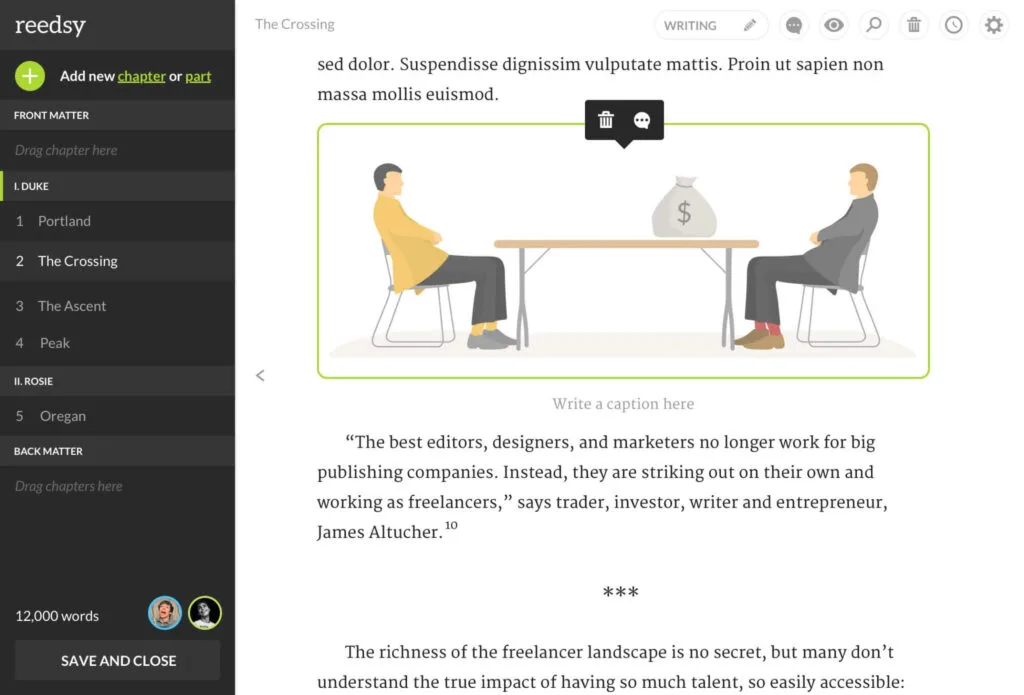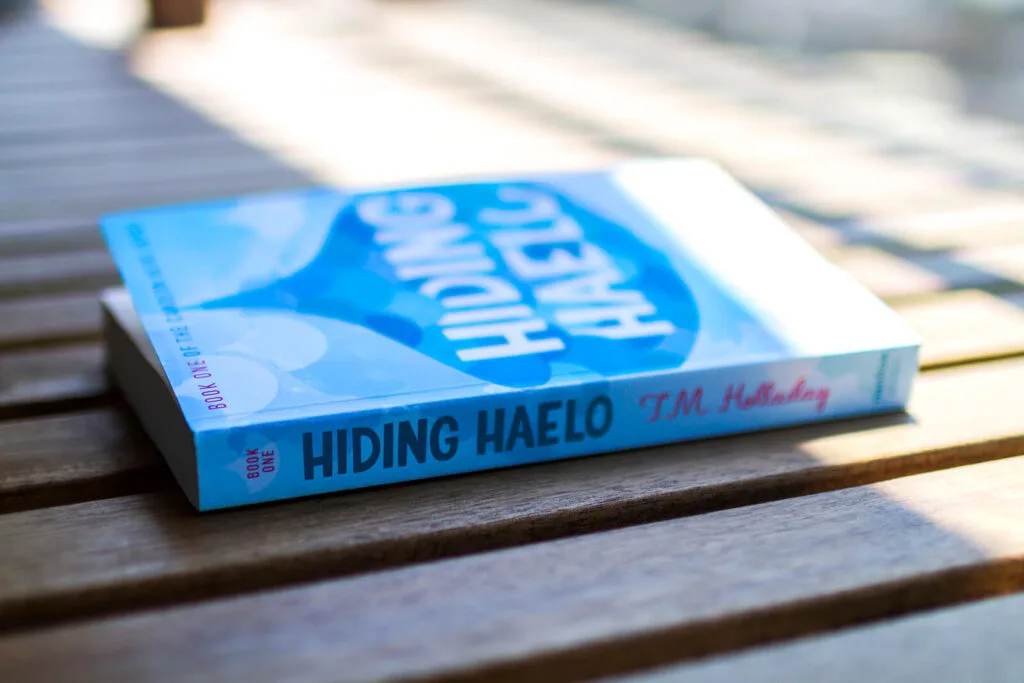 Ricardo Fayet of ALLi partner member Reedsy explains the ins and outs of their new tool to help indie authors format ebooks and print books for self-publishing – a simple and free process. For the sake of objectivity, he also makes clear its limitations, which many users will be happy to accept in return for the bargain price of $0!
Ricardo Fayet of ALLi partner member Reedsy explains the ins and outs of their new tool to help indie authors format ebooks and print books for self-publishing – a simple and free process. For the sake of objectivity, he also makes clear its limitations, which many users will be happy to accept in return for the bargain price of $0!
The typesetting (or formatting) stage is one of the most overlooked ones in the publishing process. After all, formatting won't change the essence of your book (like revising or editing can), and it doesn't influence readers' purchases like a good cover will.

And yet, the way a book looks on the inside is usually one of the clearest indicators of the level of professionalism the author has put into producing it.
If you've ever tried turning a Word document into an EPUB or a print-ready PDF file, you'll know that the most popular word processors aren’t meant for making books. Hence the success of dedicated formatting tools like Vellum, Calibre, or Jutoh.
At Reedsy, we wanted to approach formatting and typesetting from a different, simpler perspective.
Philosophy of the Reedsy Book Editor
The idea behind the Reedsy Book Editor was to democratize high-quality book production. With that in mind, we built a tool that is: a) completely free, b) accessible through every device and browser, and c) involves no learning curve whatsoever.
Now, when it comes to typesetting for print, there are very specific rules which tend to require a certain learning curve. You need to take into account things like margins, spacing, indents, images, widows, orphans…
The Reedsy Book Editor takes care of all these issues automatically. For the author, this means two things:
- You don't need to know anything about typesetting to get a perfect-looking PDF that will be accepted by all major POD distributors;
- You won't have to navigate through hundreds of fancy features that could potentially mess up the typesetting.
For example, you don’t choose your own font, or size, or spacing. All these typesetting decisions are controlled by the software based on the template you select, a feature noted by indie author Tara Holladay when she used the Reedsy Book Editor for her novel Hiding Haelo.
“I love that I didn't have to worry about weird, unexpected formatting quirks. All the paragraphs indented properly without hidden tabs. The alignment was uniform throughout unless I needed specific sections aligned differently, which only took one click: really easy to do.”
While the limited customization options has been frustrating to some, it's the only way to ensure that the end result will always be perfect.
“You don’t have a huge variety of choice in how things appear at the moment,” says writer (and soon-to-be ALLi member) Rebecca Milton, “but the service is still in its early days — and the options you have are plenty.”
Authors can currently choose between three templates:
- Reedsy: the perfect choice for non-fiction
- Classic: for a style similar to Penguin Classics
- Romance: which is for… well, you can probably guess
And over the next few months, we’ll be looking to roll out even more new themes.
How to format a book for both EPUB and print within the Editor
Step 1: Importing your book
Okay, this is probably the one frustrating step left in the process. Importing your book to the Editor requires you to copy-and-paste your book a chapter at a time.

We're working on a smarter import feature but for now, you'll need to spend five-to-ten minutes copy-pasting your manuscript into the interface. The software retains most of your formatting (bolding, italics, etc.), but will remove all the unnecessary code that Word or Google Docs always adds to the text…
Step 2: Applying the finishing touches
Once you have your entire book in there, you can go through it and apply any final touches using the formatting bar — which automatically appears when you highlight text.

At this stage, you can also drag and drop images, write captions, or add endnotes.
Step 3: Configure the front and end matter
The sidebar of the Reedsy Book Editor is separated into 3 sections: the front matter, the body, and the back matter. If you're not familiar with the anatomy of a book, you can read more about these sections in this post.

Note the sidebar (left) with front matter and back matter sections
Parts of your front matter, like your title and copyright pages, will be automatically generated, based on the info you provide in the book's settings.
“The book settings feature keeps all of your info in one place,” says Tara Holladay. “You don't have to guess what to put on the copyright page: it's all done for you. Just enter your title, author name, ISBN, publisher information, logo, description, and then all of the front matter and first level metadata is done for you.”
3: Export your book
This is the fun part. Once everything is ready, you can head to the export page and choose between EPUB or PDF export.
Here's where you can customize your book a bit more and choose:
- your template
- whether you want drop caps
- where you want your end notes
- your trim size (for print)
Then, simply hit “export” and you’ll receive the formatted book within seconds (for ebook) or minutes (for print) in your email inbox.
When it came to self-publishing his debut novel, The Crossing, author Michael Doane decided to try out the Reedsy Book Editor.
“It made formatting, exporting, and publishing a breeze,” Doane says. “I simply dropped in my text from a word processor, selected a few options, and within minutes had a beautiful, professionally formatted file that I could upload to Amazon, Barnes & Noble, and every other major retailer.”
To make sure your files will be accepted on the first try, we’ve tested our EPUBs with every major retailer and distributor, and our PDFs with Createspace, IngramSpark, and Blurb. In fact, we’ve recently partnered with Blurb to let you send your Reedsy-formatted PDF to them with a single click.

T.M Holladay’s Hiding Haelo, formatted with the Reedsy Book Editor and printed by Createspace
Note: there is no “preview” feature within the Reedsy Book Editor. If you make a formatting change and want to see what the end result looks like, you'll need to run another export.
What are its limitations?
I was asked to write an honest post about the Reedsy Book Editor, so it’s only fair that I dedicate the last section to the limitations of this free software.
1. It's browser-based
We like to think of this as a positive because you can access it from almost any device and browser through your Reedsy account. But it also means you'll need an active internet connection, as there’s no app to download.
2. It's not for image or illustration-heavy books
If you want to produce a cookbook or a coffee-table book, we would not recommend the Reedsy Book Editor. You can insert images, but you will have trouble arranging text around them. This higher level of design complexity needs to be handled properly with software like InDesign.
3. Customization is limited
As I mentioned earlier, only a few templates are available for now. That and you won't be able to use fancy fonts for drop caps or chapter titles.
But on the other hand, our existing templates (including their fonts) have been designed by professional typesetters based on widely-used industry standards.
4. There's no .mobi export
The reason for this is simple: if your EPUB is formatted correctly, you can upload that file to KDP, and they'll do the conversion. We've run repeated tests to ensure that Amazon converts our EPUBs seamlessly (which it does). But if you want to export or customize your .mobi directly, you'll need to use another tool.
 And that's it! I hope I’ve shed some light onto what you can (and cannot) do with the Reedsy Book Editor. Even though it's a free product, we do spend a considerable amount of time and resources refining it: if you've used the tool and have any feedback, we'd love to hear it!
And that's it! I hope I’ve shed some light onto what you can (and cannot) do with the Reedsy Book Editor. Even though it's a free product, we do spend a considerable amount of time and resources refining it: if you've used the tool and have any feedback, we'd love to hear it!
OVER TO YOU Have you used Reedsy's Book Editor yet? Feel free to share your case studies via the comments box!
#Authors - have you heard about @ReedsyHQ's new free book formatting tool? Great post here: Share on XOTHER HELPFUL POSTS ABOUT FORMATTING CHOICES – FROM THE ALLi ARCHIVE





Wood household furniture possesses something quite organic about it.
There is this feeling of coziness, of attributes and of sophistication that may be be discovered
in hardwood furniture. Hardwood is actually birthed from the planet.
I used this book exporter and while it’s great, it doesn’t take care of widows and orphans as it says it does. Several sentences are broken up on separate pages. Multiple times.
My biggest complaint is the lack of basic ability to change the line height in exported books. All the 5 x 8 exports export at around 30 lines of text per page. That might be fine if you exclusively write adult fiction – but that word count is way to high for middle grade or even most YA.
Until they can fix that very basic issue, it’s unusable to me.
Hi, have you found a good and easy tool for YA fiction? I’m finding the same problem. I need to change the font size!
That’s valuable feedback, thank you. Can you tell me more about why 30 lines of text per page is too much for YA or MG? We’ll be developing more templates in the future, so we could prioritize a YA/MG one with different line height.
Hi there, after reading this awesome piece of writing i am also happy
to share my experience here with mates.
Good day, Ricardo,
As an 85 year old ‘new-comer’ to the world of ‘Indie publishing’ (with three books already on Amazon) and a just-finished sci-fi trilogy awaiting the daunting task of the first of, most likely, numerous edits, I am beside myself with wonder and delight to discover that there is a ‘free’ service out there in the ‘dog-eat-author’ world of ebook adventuring for those of us who do not have the $$$ to hire the ‘pricy’ help that books like ours will require.
We just wanted to say thank you for your incredibly unselfish offering of aid to the thousands of us, who either began writing far too late in the game, or who have discovered a relentless ‘new-found’ passion for writing in the ‘infamous dottage of life’… with a dozen stories yet unfinished and languishing on our hard drives.
Cudos and blessings to you ALL at Reedsy
Thank you very much for the kind words, Rodd, that means a lot to me and the team 🙂
I’m wanting to do ebooks on kdp for kindle, if I use reedsy and have endnotes, will they be clickable? Kindle requires that endnotes be clickable.
Yes, absolutely: end notes are easy to add on the Reedsy Book Editor and will be clickable on all electronic formats we export to (EPUB and MOBI).
Does it have full page image capability?
No, we automatically resize images to fit the width of the page. The Reedsy Book Editor is definitely not meant for photography books or books where you want to have text reflowing over and around images.
When creating a manuscript of short stories in Libreoffice Writer, for self-publishing, what I do for first page of every story is
Manually space down 6 spaces from top of page for title of each story. Type in title of story. Then center title. Then, 2 spaces down for text of story.
Is that the way it’s done? Or, can this be set up automatically for each story?
Thanks.
Fro me, the Reedsy editor is not what, in the startup world, we refer to as an MVP – a minimum viable product, or the least that you want to go to market with.
Having to cut and paste, in my case, dozens of chapters, is not only a pain that other free editors have already solved – I make my chapter headings H1 and their software takes care of the rest – but doesn’t acknowledge how many writers actually work.
We work iteratively. Once I get a manuscript into an ebook converter, I send it out for comment. I read it myself in a format that looks very different from Word. Then there are changes to the text. Those changes need to be made in the original Word document. And then the cutting and pasting begins again?
Reedy’s editor means everything I’ve done to get the book in the editor is lost, and I need to start over.
I totally hear you on the copying and pasting. We’re working on an import function (a bit more sophisticated than what other editing tools do…) right now, which will make the process smoother.
However, re working iteratively, I think there is a misunderstanding here as to how our Reedsy Book Editor works. It’s actually more than just an “ebook converter”, it’s a proper writing and formatting tool. After you’ve imported your manuscript (by copying and pasting), you can then make changes directly in there, from any device — in a much better interface than Word or other writing tools — and then re-export the EPUB or PDF. So you never need to go back to Word, you have your final manuscript file safely backed up on Reedsy.
In fact, we’ve had many authors write their whole manuscript directly in there already. Justin Jackson did a pretty good video tutorial of it: https://www.youtube.com/watch?v=GIG-Q8Hg0oM
Have you resolved the importing issue so you no longer have to cut and paste each chapter
Yes, the Reedsy Book Editor has had a Word import feature for a couple of years now, which works seamlessly and keeps your formatting and chapters — if they’re correctly styled using “heading” styles.
First, sorry for the delay in getting back to you — I don’t receive notifications for comments on here.
I think there is some confusion as to what the Reedsy Book Editor is: it’s not just a “converter”, it’s a writing AND formatting tool. Meaning that once you have the content in there, you can change the content directly in there — you don’t need to go back to Word ever again. Heck, many people are actually writing their books directly in the Editor now.
As for importing, we now have an import function that will keep the formatting and automatically recognise chapters if the Word document is formatted correctlly.
Ricardo, it would be really helpful if, when we clicked on the link to the book editor, we actually got taken to the book editor.
Instead we have to login and immediately find ourselves on the market-place page, and there is no link anywhere to the book editor.
In fact the book editor is hidden away in My Books – not the place a first-time user is going to look because by definition they have no books at that point.
Thanks for your comment, Mark. You’re absolutely right, and we’ll be making the Reedsy Book Editor more prominent and easier to access as we keep building and improving it.
The plan is to integrate it with the marketplace as it becomes collaborative (with track changes, commenting, etc.). Right now, our main product is the marketplace and we still want to make sure that authors see it when they log in to Reedsy.
Again, thanks for your feedback!
Thanks for the quote, Ricardo – though I have to mention that my surname is Milton, not Hamilton! (Much as I might wish to be linked to the musical).
I really rate this tool and it’s great to see an article explaining its pros and cons so clearly.
Ooooops! Sorry about that, I’ll make sure we correct that as soon as we can 🙁
And thanks for the kind words re the article!